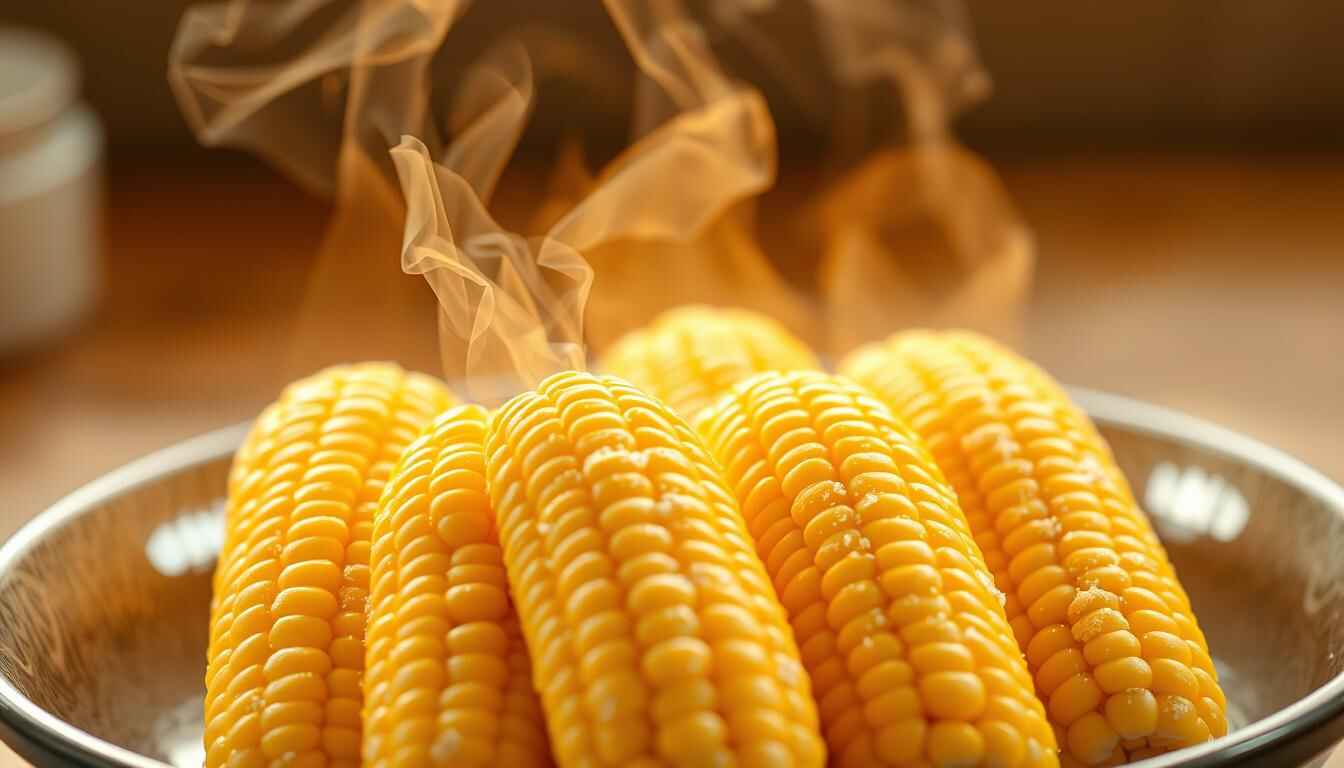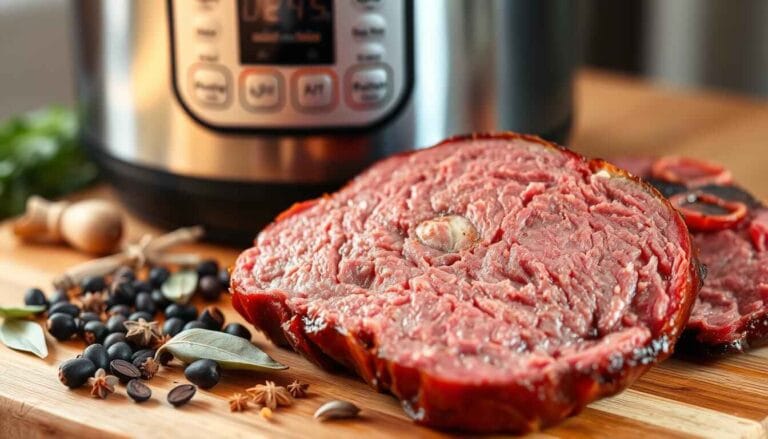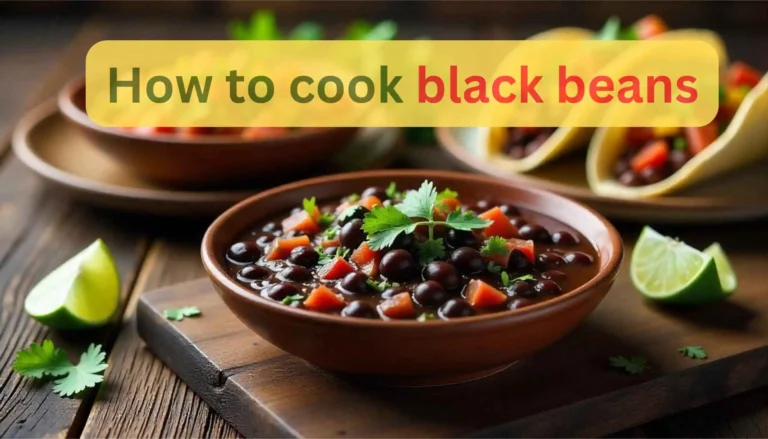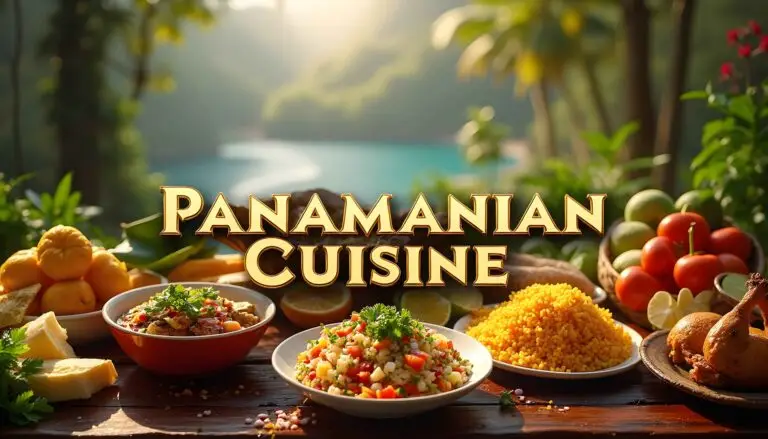How to Cook Frozen Corn on the Cob – Easy Methods
Learning how to cook frozen corn on the cob is enjoyable and valuable. Both methods, whether you opt for the quick convenience of a microwave or the classic boiling water approach, effectively enhance the corn’s innate sugary taste.
Table of Contents
This guide aims to instruct you on frozen corn’s preparation and cooking processes, ensuring it’s done right. We will explore practical tips, basic recipes, and methods devoted to corn’s sweetness. Everything you need will be provided.
Reasons Why Frozen Corn on the Cob is Helpful.
For several reasons, frozen corn on the cob is an impeccable ingredient in various dishes. Thanks to modern freezing technologies, taste and health benefits can be enjoyed throughout the year.
Nutritional benefits of frozen corn on the cob include;
Preserving corn’s nutritional value and freshness is achieved through flash-freezing. Consumers can enjoy corn filled with vitamins, minerals, and antioxidants even during off-seasons.
Some key nutritional benefits of frozen corn on the cob include:
- High in fiber, vitamins, and minerals
- Rich in antioxidants
- Good source of essential nutrients like vitamin C and potassium
Easily Accessible, Cost-Effective, and Priced Year-Round.
Frozen corn on the cobs also has practical benefits since it is available all year. They are easy to store in freezers, aiding meal scheduling and grocery shopping.
When utilizing frozen corn on the cob, you can:
- Have meals ready to go in advance.
- Enjoy corn on the cob any month of the year.
- Reduce food waste by using what’s needed.
Quality Considerations When Buying
When purchasing frozen corn on the cob, quality does matter. Ensure there is no visible damage, freezer burn, or thawing signs. Opting for a well-known brand usually ensures a good product.
Tips For Finding The Best Frozen Corn On The Cob
- Make sure the packaging is sealed and has no visible missing pieces.
- Seek products with a low quantity of added ingredients.
- Only purchase from reputable companies.
The video shows that preparing frozen corn on the cob needs critical attention.
Decide whether to thaw it out or cook it right from the freezer. Make sure the necessary equipment is prepared in advance.
Do You Thaw It First?
Corn comes in two preparations: thawed or cooked from frozen. Some argue that thawed corn allows quicker cooking, but this isn’t always true. Frozen cooking has benefits when it comes to preserving texture and flavor.
Removing Packaging and Initial Preparation
Before the cooking process, remove the frozen corn from its packaging. Then, grab a sieve and rinse the frozen corn under cold water for a few seconds. This helps remove ice crystals and guarantees that the corn is cooked uniformly.
Tools and Equipment You’ll Need
The required tools will vary depending on how you cook the corn. If you plan to boil the corn, have a pot that is big enough with a lid. If you microwave the corn, select a proper microwave-safe dish. Look at the table below to see what you require depending on the cooking method.

| Cooking Method | Tools and Equipment Needed |
|---|---|
| Boiling | Large pot with lid, tongs or slotted spoon |
| Microwaving | Microwave-safe dish, microwave |
| Oven Roasting | Oven, baking sheet, aluminum foil |
Basic Methods to Cook Frozen Corn on the Cob
As mentioned before, frozen corn can be enjoyed in various ways. Boiling is always a crowd favorite, as it tenderizes and makes the corn extra delicious. Whether it’s your first time or your hundredth, we’re prepared to guide you through the hard step of boiling frozen corn on the cob.
Step-by-Step Boiling Instructions
To boil frozen corn, fill a large pot with water to cover the corn. Add a pinch of salt to enhance the flavor. Heat the water until it bubbles.
Once the water reaches a boil, add the frozen corn to the pot. Keep the water boiling and lower the flame to ensure a simmer.
Cover the pot to keep the heat inside. This way, the corn will cook uniformly. The boiling duration depends on the brand of corn and how soft you prefer it.

Assessing the Ideal Cooking Duration
The usual boiling time for frozen corn is 5-7 minutes. However, verifying the time rather than idly waiting for it is best. The cooking duration varies depending on the corn size and your desired softness.
Checking Doneness
To test the doneness of corn, remove a piece from the boiling water using tongs. Grab a fork and stab a kernel. If it’s tender, the corn is ready. If not, boil some more and check again after a few minutes.
Once the corn is tender, pour out the water. Your delectable frozen corn on the cob is now ready to be devoured.
Follow these simple guidelines to enjoy perfectly tender frozen corn on the cob. It will complement your meal wonderfully.
Quick Result Using the Microwave
Microwaves make prep work so easy. All you need to do is throw in some frozen corn on the cob, and in no time at all, you’ll have a thoroughly delicious meal ready to eat. Even better, no flavor is lost when making corn this way. All you have to do is hit the button and follow the instructions, and you’re set!

Microwave Cooking Instructions
The first thing you want to do is get a microwave-friendly bowl. If you have a bowl, ensure the frozen corn on the cob is removed from the packaging. Place the corn into the microwave-safe dish, and everything will be ready.
You can also cover the corn with a damp paper towel to retain more moisture, as this traps water vapor.
Power Settings and Cooking Times
Depending on the power of your microwave, the cooking times are subject to change. In most cases, putting the device on high for three to four minutes works perfectly, too, but only for one ear of corn. If more than one ear is under consideration, timing must be adjusted to suit your device and the number of ears being cooked.
Microwave Cooking Advantages
There are many benefits to microwave cooking. It’s super fast, reduces the cleaning needed afterward, and helps retain the nutrients in the corn, too! All in all, it’s a great option.
Now that you have the instructions above, you can have ready-to-eat, frozen corn on the cob without cutting corners. You can also control how it tastes, all while being healthy!
The correct ways to cook using the oven and a grill.
Whenever I feel like adding a new taste to frozen corn on the cob, an oven or a grill does the job. They help lift the corn’s natural sweetness while adding a bit of smokiness. This pairs well with corn during summer barbeques or cozy dinners.
Serving Corn Using An Oven Roasting Technique
Using an oven when roasting corn is easy. For starters, first at 200 degrees. Lay the corn on a tray. Then, pour olive oil over it and choose
Roasting for roughly 25 minutes ensures the corn is tender and sweet, adding a slight caramelization.
Guides to Follow For Even Oven-Roasting
- Keep a single layer of corn on the baking tray for even heating.
- Make sure to char the corn halfway for even browning.
- Add in other seasonings like garlic powder.
Grilling Frozen Corn on the Cob
The grilling method adds a smoky goodness to the corn. If using a grill for the first time, keep it at medium-high temperature. Set the corn straight on the grates and cook until lightly charred.
Tips:
- Add a water bath to the corn before putting it on the grill to help with drying.
- Put a grill mat on some foil for easy food shredding.
- Basting with oil or butter infuses extra flavor when grilling.
How To Flavor During Cooking
Frozen corn on the cob retains flavor when spices are added during cooking. Herbs and spices should be added before or during every cooking method, whether oven roasting or grilling. Try mixing butter with lime juice and cotija cheese for a bold flavor.
| Cooking Method | Cooking Time | Flavor Profile |
|---|---|---|
| Oven-Roasting | 20-25 minutes | Sweet, Savory |
| Grilling | 10-15 minutes | Smoky, Charred |
Equipped with great ingredients, you are sure to get excellent results. Asrten says, “The most important thing in cooking is to have great ingredients, and corn is one of those.”
“Using high-quality ingredients is key, and with frozen corn on the cob, you can achieve a delicious and comforting dish at any moment.”
Seasoning Ideas and Serving Suggestions
Creative ideas for spices, accompanied by straightforward instructions, can improve your frozen corn on the cob.
Traditional butter and salt mixtures
Butter and salt’s timeless elixir works wonders on corn on the cob. They add flavors to the sweetness and natural taste of corn. Try flavored butters like garlic and herbs, and enjoy the difference.
New Ideas to Spice Things Up
Looking for something different? Spice up your corn with paprika and chili powder, or sprinkle Parmesan cheese on a drizzle of olive oil or lime juice, which goes a long way. These tricks will ensure that you never forget corn.
Other Relevant Foods and Corn Meal Planning
Corn on the cob complements a variety of dishes. It goes perfectly with grilled meats, salads, and vegetarian dishes. Consider what textures and flavors will blend nicely with your corn.
You can pair summer barbecues with grilled chicken or burgers, making it a fantastic addition for a fulfilling and enjoyable meal.
How to Save Corn
Do you have corn that hasn’t been finished? Please place it in the fridge, and keep it there for three days. Wrap it in foil or plastic. For reheating, a few minutes on the grill or stovetop will do, as will a couple of minutes in the microwave.
This piece is part of our cooking tips for frozen corn on the cob, where we strive to help you appreciate corn more wholeheartedly.
Conclusion
You now appreciate being able to cook frozen corn on the cob using a myriad of methods, such as boiling, grilling, using an oven, or even microwaving. To achieve great corny, follow the steps provided in the guide.
Learning to prepare frozen corn on the cob adds flair and nutrients to your meals. With time and effort, you can easily become an expert at cooking frozen corn on the cob with these simple steps. Remember to experiment with diverse seasonings to find what you love the most.




